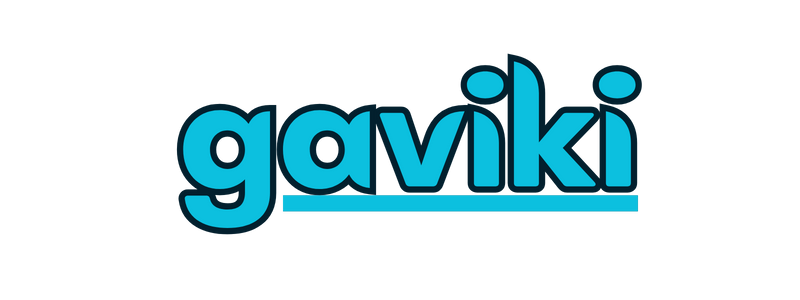

Learn Test
[email protected]
CBET Exam for Association for the Advancement of Medical Instrumentation (AAMI) Latest Update
CBET Exam for Association for the Advancement of Medical Instrumentation (AAMI) Latest Update
The Certified Biomedical Equipment Technician (CBET) exam is an esteemed certification offered by the Association for the Advancement of Medical Instrumentation (AAMI). It is widely recognized as a benchmark for professionals in the healthcare technology management (HTM) field. With evolving technologies and healthcare demands, staying current with the latest updates about the CBET exam is essential for aspiring candidates and certified professionals alike. This article provides an in-depth overview of the exam, its structure, preparation resources, and recent updates.
Overview of the CBET Exam
The CBET certification is designed for biomedical equipment technicians who demonstrate proficiency in their field. The exam tests candidates on a range of topics, including medical device technology, healthcare regulations, and safety standards. It is a vital credential that showcases a professional’s commitment to excellence in managing and maintaining medical equipment.
The CBET exam is a three-hour, closed-book assessment consisting of 165 multiple-choice questions. These questions cover six major content areas:
Anatomy and Physiology: Understanding the human body's structure and function to relate medical devices to patient care.
Public Safety in the Healthcare Facility: Emphasizing the role of biomedical technicians in ensuring patient and staff safety.
Fundamentals of Electricity and Electronics: Covering the principles of electricity, circuits, and electronic components.
Healthcare Technology and Function: Assessing knowledge of medical devices and their applications in healthcare settings.
Healthcare Technology Problem Solving: Evaluating critical thinking and troubleshooting skills.
Regulatory and Healthcare Compliance: Focusing on standards and regulations such as FDA requirements, Joint Commission standards, and AAMI guidelines.
The test aims to assess both theoretical knowledge and practical application, ensuring candidates are well-equipped to handle real-world challenges in the HTM field.
Recent Updates to the CBET Exam
The CBET exam is periodically reviewed and updated to align with advancements in medical technology and changes in regulatory standards. These updates ensure the exam remains relevant and reflects current industry practices. Recent updates include:
Inclusion of Emerging Technologies: Topics such as artificial intelligence, telemedicine, and cybersecurity have been integrated to address the growing presence of these technologies in healthcare.
Enhanced Focus on Regulatory Compliance: With increasing regulatory scrutiny, the exam now places greater emphasis on understanding compliance frameworks like HIPAA and ISO standards.
Interactive eLearning Resources: AAMI has introduced new online tools to aid in exam preparation, such as interactive modules and practice exams.
Eligibility and Application Process
To be eligible for the CBET exam, candidates must meet specific criteria. Typically, applicants should have:
An associate degree in biomedical equipment technology, electronics, or a related field, along with two years of full-time work experience in the HTM field; or
Four years of full-time work experience in the field if no degree is held.
Applicants must submit their application, including proof of eligibility and a fee, by the deadlines specified by AAMI. The exam is offered multiple times a year at testing centers nationwide, and candidates can also opt for remote proctoring.
Preparing for the CBET Exam
Preparation is critical to succeeding in the CBET exam. AAMI offers several resources to help candidates prepare effectively:
1. CBET Study Course eLearning 2.0
This self-paced online course provides a comprehensive learning experience. It covers each of the six content areas through interactive modules that begin with knowledge assessments and end with practice exams. This structure allows candidates to identify their strengths and weaknesses, enabling focused study efforts.
2. CBET Smart Practice
CBET Smart Practice is an online platform featuring over 900 multiple-choice questions. Each question includes detailed explanations to help learners understand the rationale behind correct answers. While it does not replicate the exact format of the exam, it provides invaluable insights into the types of questions that may appear and the areas requiring additional study.
3. AAMI’s Reference Materials
AAMI’s website offers additional resources, such as reference guides, textbooks, and webinars. These materials delve deeper into the technical and regulatory aspects of the CBET exam.
4. Study Groups and Forums
Engaging with peers in study groups or online forums can enhance preparation. Sharing insights, discussing challenging concepts, and practicing questions together can reinforce learning and build confidence.
Exam Day Guidelines
To ensure a smooth experience on exam day, candidates must adhere to specific guidelines:
Permitted Items: AAMI allows the use of simple calculators during the exam. However, devices with internet capabilities, such as smartphones or smartwatches, are strictly prohibited.
Identification Requirements: Candidates must present valid government-issued identification for verification.
Testing Environment: For those opting for remote proctoring, a quiet, well-lit room with no unauthorized materials is required.
Importance of CBET Certification
Achieving CBET certification offers numerous benefits for professionals in the HTM field. It enhances career prospects, validates expertise, and fosters trust among employers and healthcare providers. Additionally, certified professionals often report increased job satisfaction and confidence in their abilities.
Challenges and Tips for Success
Preparing for the CBET exam can be challenging, especially for individuals balancing work and study. Here are some tips to succeed:
Create a Study Plan: Allocate specific times for studying each content area and stick to the schedule.
Practice Regularly: Use practice exams to familiarize yourself with the question format and identify areas needing improvement.
Stay Updated: Regularly review AAMI’s updates and resources to ensure your knowledge aligns with current standards.
Seek Support: Don’t hesitate to reach out to mentors, colleagues, or professional organizations for guidance.
Conclusion
The CBET exam is a pivotal step for professionals aiming to excel in the healthcare technology management field. With its rigorous standards and comprehensive coverage of critical topics, it ensures certified individuals are well-prepared to contribute to patient safety and operational efficiency in healthcare facilities. By staying informed about the latest updates, utilizing available resources, and committing to thorough preparation, candidates can achieve success and reap the benefits of this prestigious certification.

